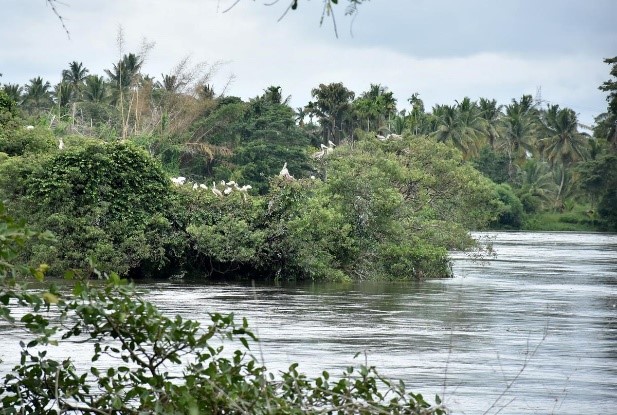RANGANATHITTU BIRD SANCTUARY
RANGANATHITTU BIRD SANCTUARY

Why in news?
The renowned Ranganathittu Bird Sanctuary in Srirangapatna has been declared a Ramsar site underlining its status as a wetland of international importance.
This is also the first and the only Ramsar site in Karnataka though India’s tally of such sites stands at 64.
Importance of Ramsar site labelling
- as a Ramsar site Ranganathittu would command international attention and importance as a wetland of global importance.
- Ramsar wetlands now comprise around 10% of the total wetland area in the country.
- Being designated one, however, doesn’t necessarily invite extra international funds but that States —and the Centre — must ensure that these tracts of land are conserved and spared from man-made encroachment. Acquiring this label also helps with a locale’s tourism potential and its international visibility.
About Ramsar convention:
- India is a signatory to the Convention on Wetlands which was adopted in the Iranian city of Ramsar in 1971 and provides a framework for conservation of wetlands.
- The convention lists as many as nine criteria and fulfilling even one of them is sufficient for a wetland to be recognised as a Ramsar site.
- According to the Ramsar convention, ‘’A wetland should be considered internationally important if it supports populations of plant and/or animal species important for maintaining the biological diversity of a particular biogeographic region’’.
- Similarly, it has spelt out criteria based on bird population of specific species, fish, and other taxa.
- One of the Ramsar criteria is that a wetland should support 20,000 or more waterfowl while another is that it should regularly support 1% of the population of one species or sub-species of water bird.
- Ranganathittu meets three to four of the nine criteria pertaining to local flora, fauna, and ecology and hence it is a well-deserved recognition.
About Ranganathittu bird sanctuary:
- The bird sanctuary supports more than 1% of the world’s population of spot-billed pelicans — as against a global population of nearly 17,000, Ranganathittu supports about 1,000 of these birds. During the last enumeration exercise as many as 220 bird species were listed.
- Similarly, it supports a high population of painted storks and mugger crocodiles besides other species of fish and hence the six islands and the water surrounding them would be part of Ramsar site.
India’s wetlands:
- The National Wetland Inventory and Assessment compiled by the Indian Space Research Organisation (ISRO), estimates India’s wetlands to span around 1,52,600 square kilometres, which is 4.63% of the total geographical area of the country.
- A little over two-fifths are inland natural wetlands and about a quarter are coastal wetlands.
- India has 19 types of wetlands. Gujarat has the maximum area followed by Andhra Pradesh, Uttar Pradesh and West Bengal.
- Wetlands in Uttar Pradesh and Gujarat serve as important spaces for migratory birds.
Importance of wetlands:
- Wetlands are also known to have among the highest soil-carbon densities and therefore play a major role in buffering carbon dioxide emissions.
The 10 new sites
- six in Tamil Nadu and one each in Goa, Karnataka, Madhya Pradesh and Odisha — encompass an area of 1,51,842.41 hectares, bringing India’s total wetland area to 1.2 million hectares.
-
The sites are Koothankulam Bird Sanctuary, Gulf of Mannar Marine Biosphere Reserve, Vembannur Wetland Complex, Vellode Bird Sanctuary, Vedanthangal Bird Sanctuary and Udhayamarthandapuram Bird Sanctuary, all in Tamil Nadu, Satkosia Gorge in Odisha, Nanda Lake in Goa, Ranganathittu Bird Sanctuary in Karnataka, and Sirpur Wetland in Madhya Pradesh.

